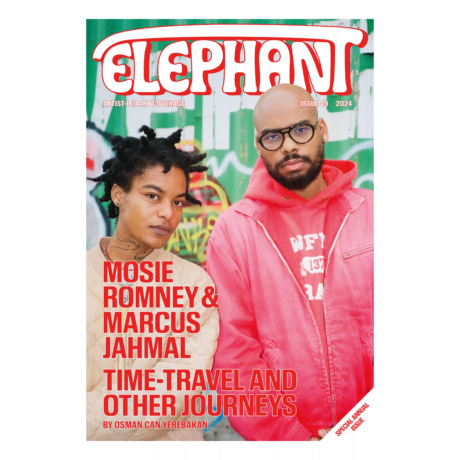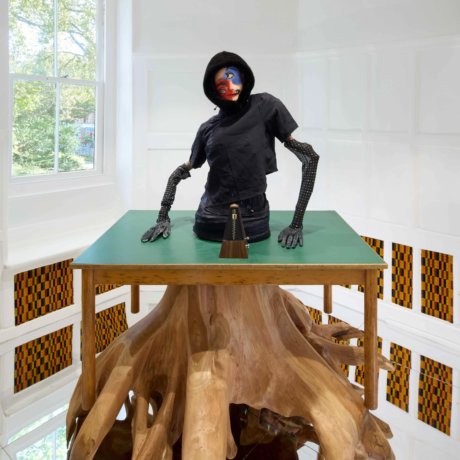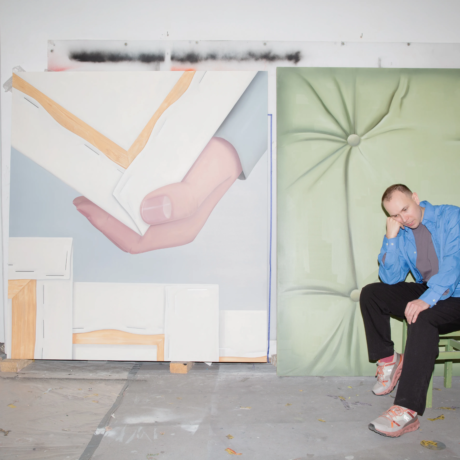Rosie Fitter speaks with photography duo Fede Reyes and Rachael Israela about their upcoming work and sustained practices.
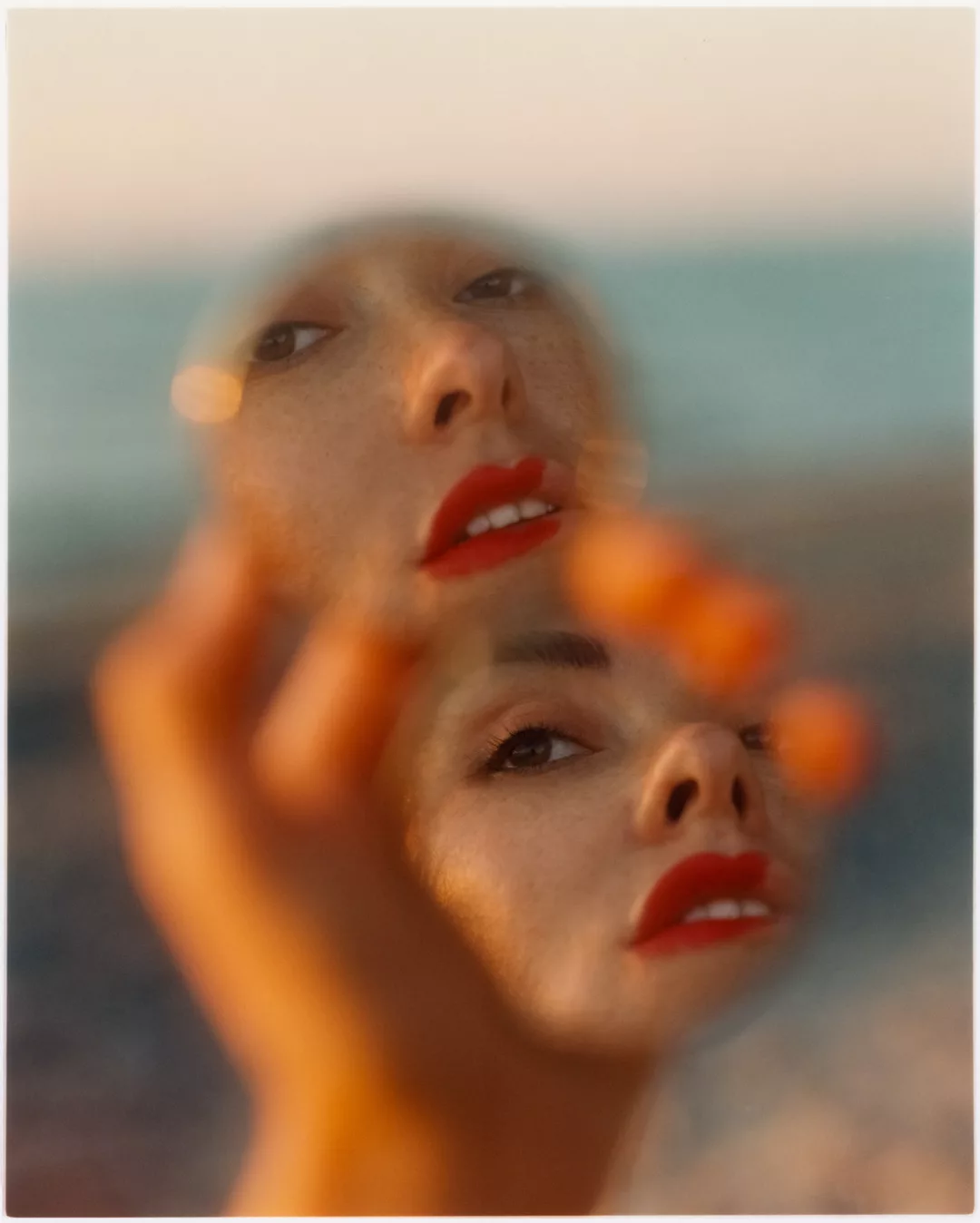
Rites and rituals are commonplace in the everyday, even when we’re not aware of it. The practice of Studio Reyes & Israela, made up of the duo Rachael Israela and Fede Reyes, is rife with the ritualistic. For them it’s a tool to create and control moods, environments and characters, both when behind the camera and also in their own relationship.
Working as a couple since 2020, Israela and Reyes now live and work between Berlin and Mexico, focusing on fashion photography and portraiture. Their practice is an interdisciplinary one on which they are keen to expand, incorporating music, moving images and lightwork. Having collaborated on numerous global projects and exhibitions, they continue to shape unique perspectives in their work, creating utterly immersive, multidimensional experiences.
The pair draw on a whole archive of material, including personal references and experiences, which they weave into their world-making, creating fantastical scenes and environments. But their work is simultaneously grounded in reality, drawing attention to people’s stories, narratives and lived experiences—especially those whose tales are not often told—in a way that is wholly human-oriented and often political.
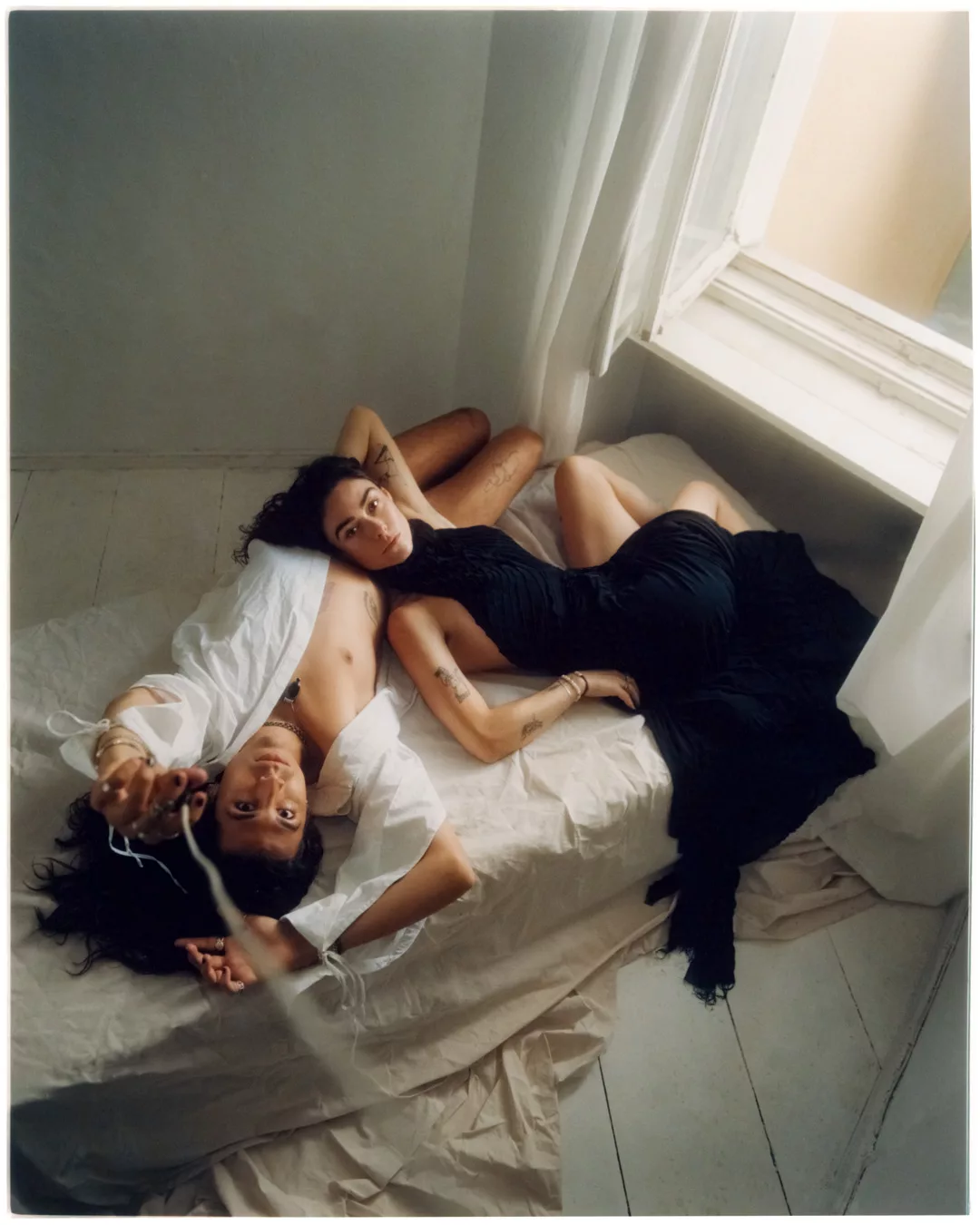
Rosie Fitter: It seems that even though you’ve been so busy of late, you’re planning on expanding your practice even further. What are you working on at the moment?
Rachael Israela: We’re currently working on a photo archiving agency representing femme-identifying, trans and non-binary image-makers. We’re really excited about this at the moment—it’s a big project for us.
Fede Reyes: We also want to travel a lot more. We’re going to Mexico City in January for a few months—I was born in Mexico. We want to be able to work more remotely, having both worked in fashion, which is so location based; you always need to be on set. Maybe this is different for a stylist, but if you’re a photographer, you always need to be physically present.
We have a few editorials coming out soon. Other than that, we have a new studio, which is in the space just below our flat—a real achievement considering the rental crisis in Berlin at the moment. It’s great, because we can work alongside our friends who are multidisciplinary artists and take part in an exchange of ideas, getting loads of inspiration across disciplines.
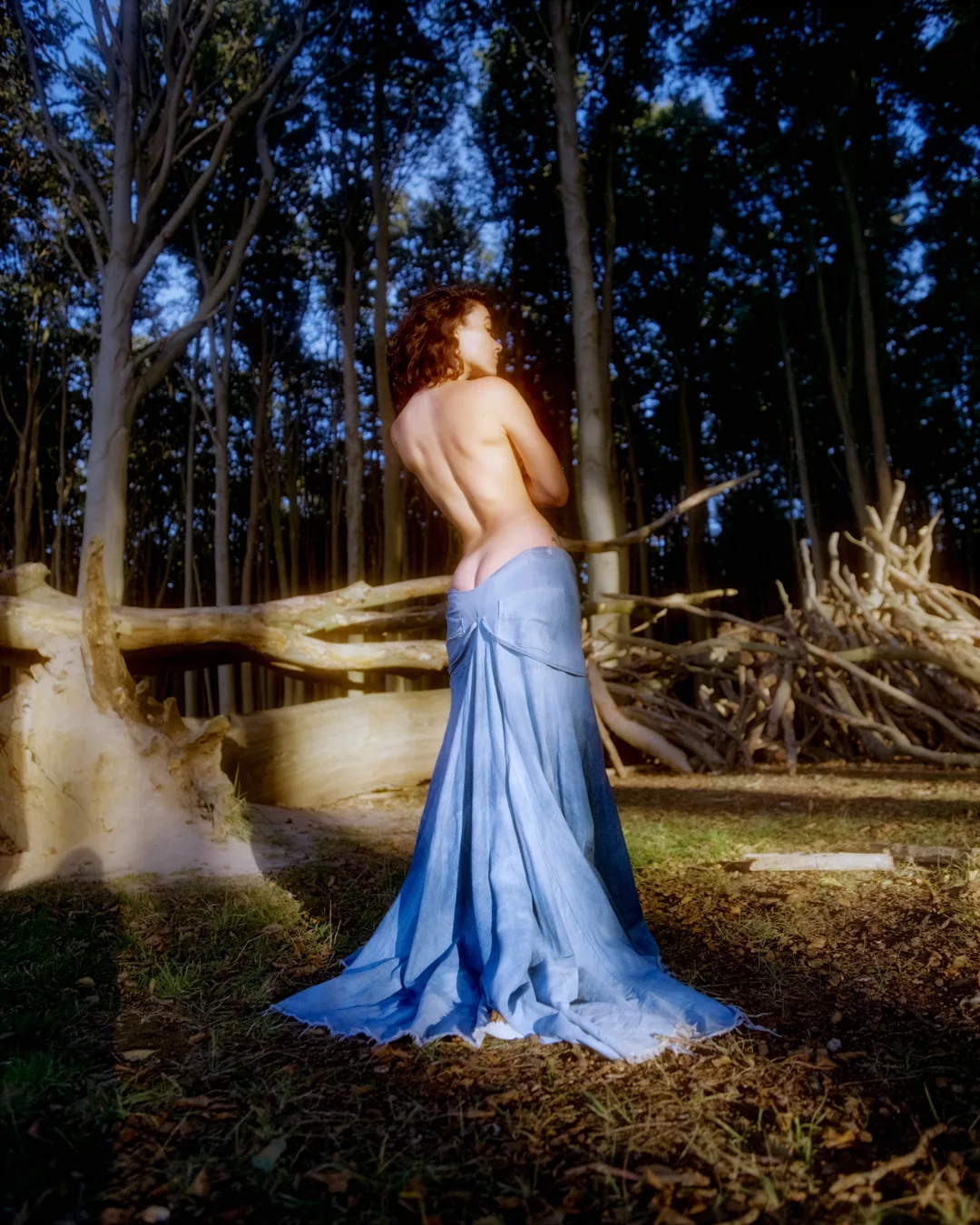
RF: You both seem to be very ambitious. Your work is pushing the boundaries and challenging established norms or conventions. How do you envision your photography progressing, and what would be your aspirations and long-term goals?
FR: The ideal situation would be working to showcase areas and issues away from or ignored by the public eye. I want to raise awareness of the First Nations issues in Mexico and Latin America, which are becoming increasingly problematic. I’d love to be able to highlight this important issue, perhaps through a combination of fashion and documentary—something that would allow us to travel and talk to and capture real people’s experience of their reality in different areas. We love to go on road trips. A dream would be to make one of these into a movie or documentary.
RI: It’s so amazing, when we meet an extraordinary person with so much to say, to be able to integrate our different practices. We’d love to explore editorial work more too, capturing people’s stories. Sometimes we have a shoot and will end up talking to the protagonist for three hours, really getting people to open up.
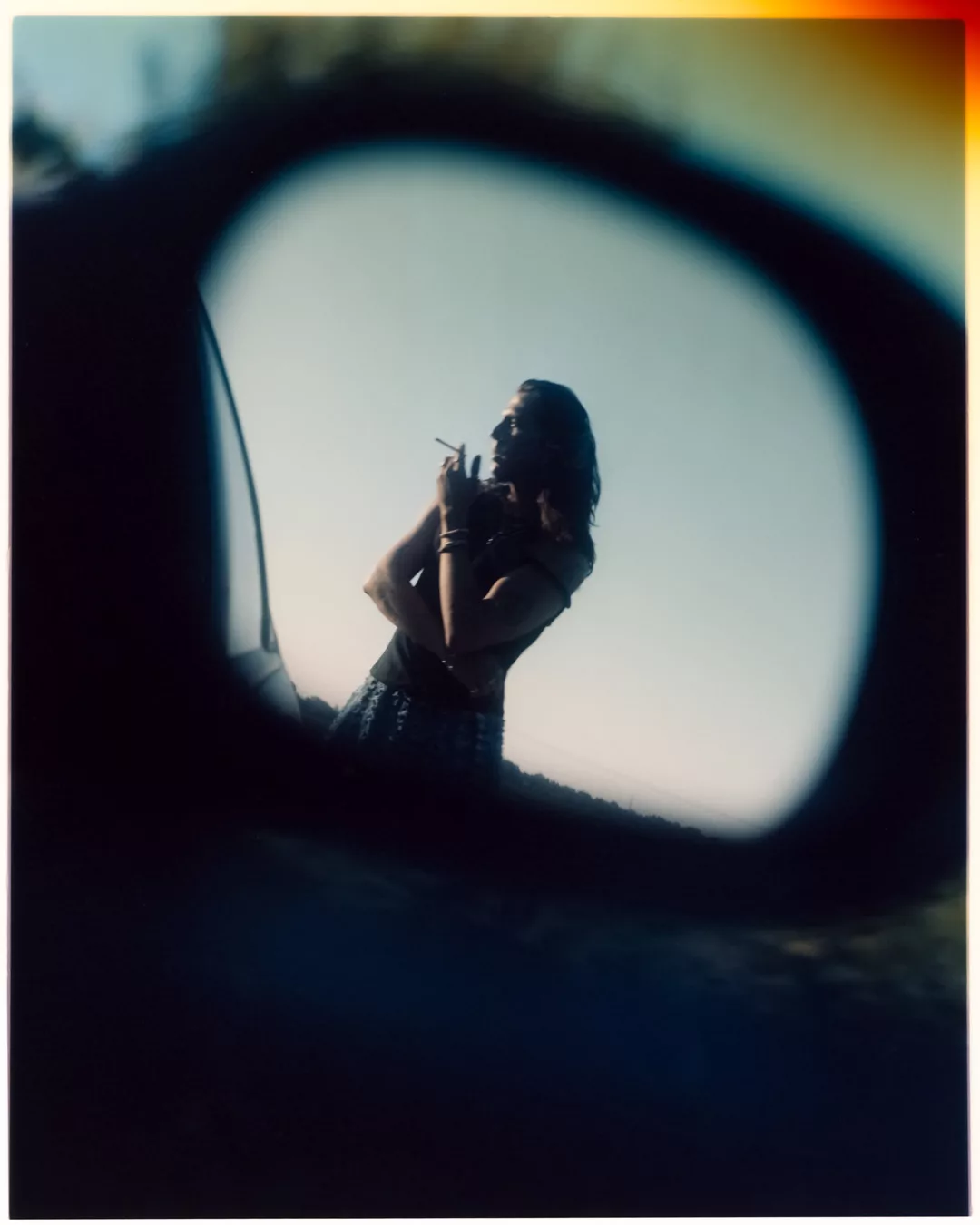
RF: You’ve expressed an interest in scars, skin, and what could be considered imperfections. In fact, many of your projects broach and champion inclusivity. What challenges or successes have you encountered by doing this and is there a message or story you aim to highlight through these subjects?
FR: I love the idea that how you perceive beauty has a lot to do with how you train your senses. We’re hardwired to perceive beauty in a certain way, but you can alter this by changing your mindset. When I meet someone who has a captivating face, but perhaps others would consider them to be unusual or out of the ordinary, I can see they hold a lot of power in that face. They are beauty itself and this is projected in their energy. We, in turn, are inspired to capture this.
RI: Maybe it’s cringy, but it’s the energy of our subjects that we’re trying to capture. We previously photographed a delivery man with vitiligo who we’d met on the street. We’d just been at dinner and I told him I wanted to capture him. It turned out he was a struggling artist and was really spiritual in a captivating way.
We love to create these kinds of spontaneous situations, but there are challenges. Working with people who aren’t professional models can be difficult; you need to direct and coach them. We try to remove the barrier between us and be open with the subject, which helps with the awkwardness of both of us—it’s a mutual exchange.
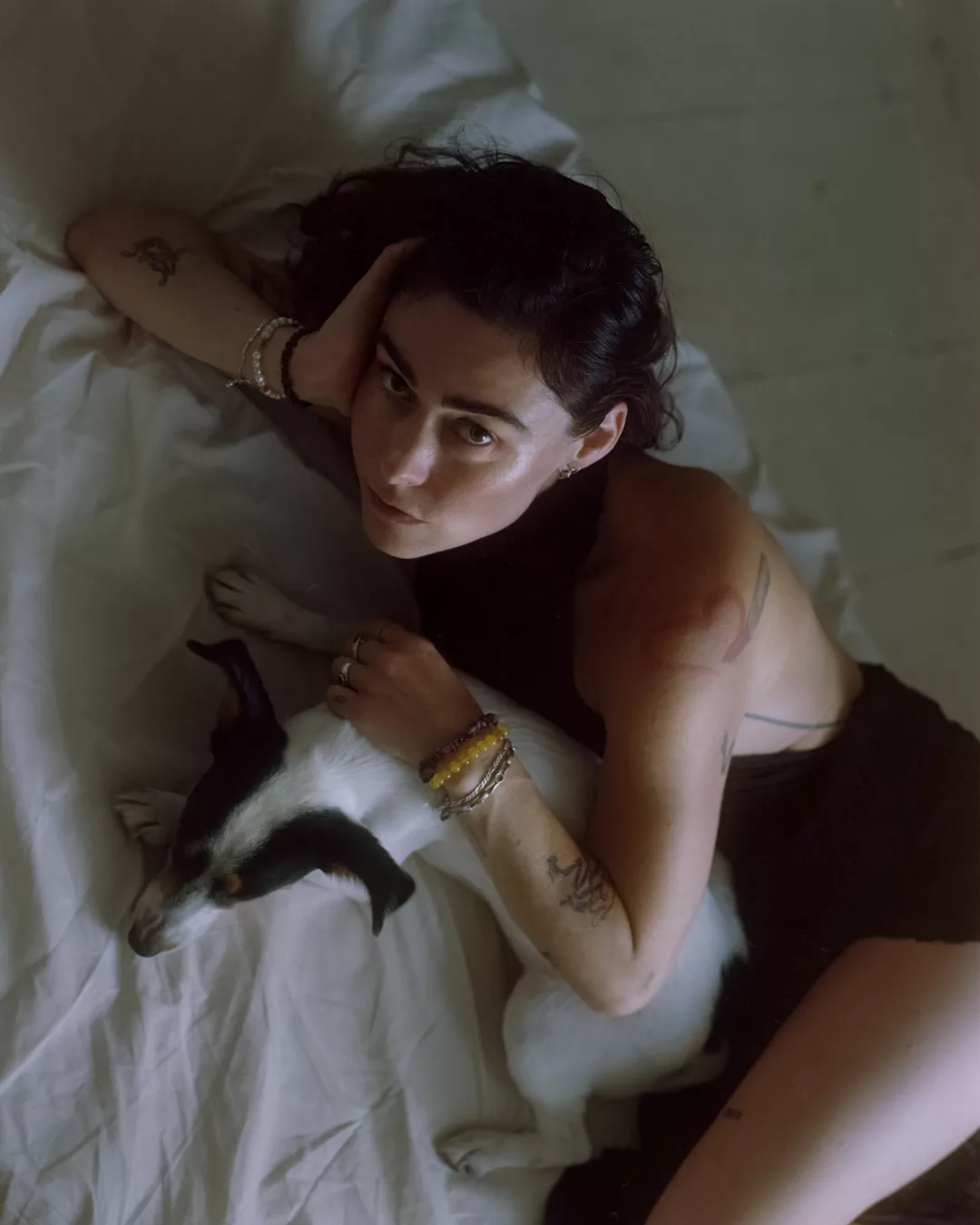
RF: How do you strive to capture the complexities of someone’s character and identity, and create a relationship with subjects through the lens?
RI: We never want to create something overly organised or staged and especially not typecast anyone. We just try to have easy conversations to understand a purpose or topic that would fit them, but never to alter their physical appearance.
FR: Yes, but we also stalk the person online beforehand, to get an understanding of what kind of lifestyle they lead, of their values and networks. We like to know the person beyond just their appearance. This is also why we like to work with people we know, or friends of friends.
When we have to work with models selected by a casting director, we’re always completely involved with the casting director to ensure the right message is put across.
RF: So much of your work focuses on the strange and other-worldly, but is also inspiring, strong and playful, showing the joys in life as well as mundane and everyday interactions and relationships with people. What would you say is the overarching statement or message that you would like to convey through your photography?
FR: We really love the idea that life is just like a movie—we’re cinema geeks. We like to take an everyday mundane situation and elevate it to the most glamorous, fantastical world that we can create. By doing this, we want to showcase that absolutely everything in life can be turned into a wonderful, film-like situation; we can create a scene of horror, romance, comedy. We use different effects on the camera too, to create atmospheres, like an 80s or 90s movie. For example, we’d photograph someone who would be considered a ‘girl next door’ but do her makeup extravagantly and have crazy styling, make her look unusual, like she could be the next Tilda Swinton. It’s just elevating everyday reality into a kind of fantastical realm
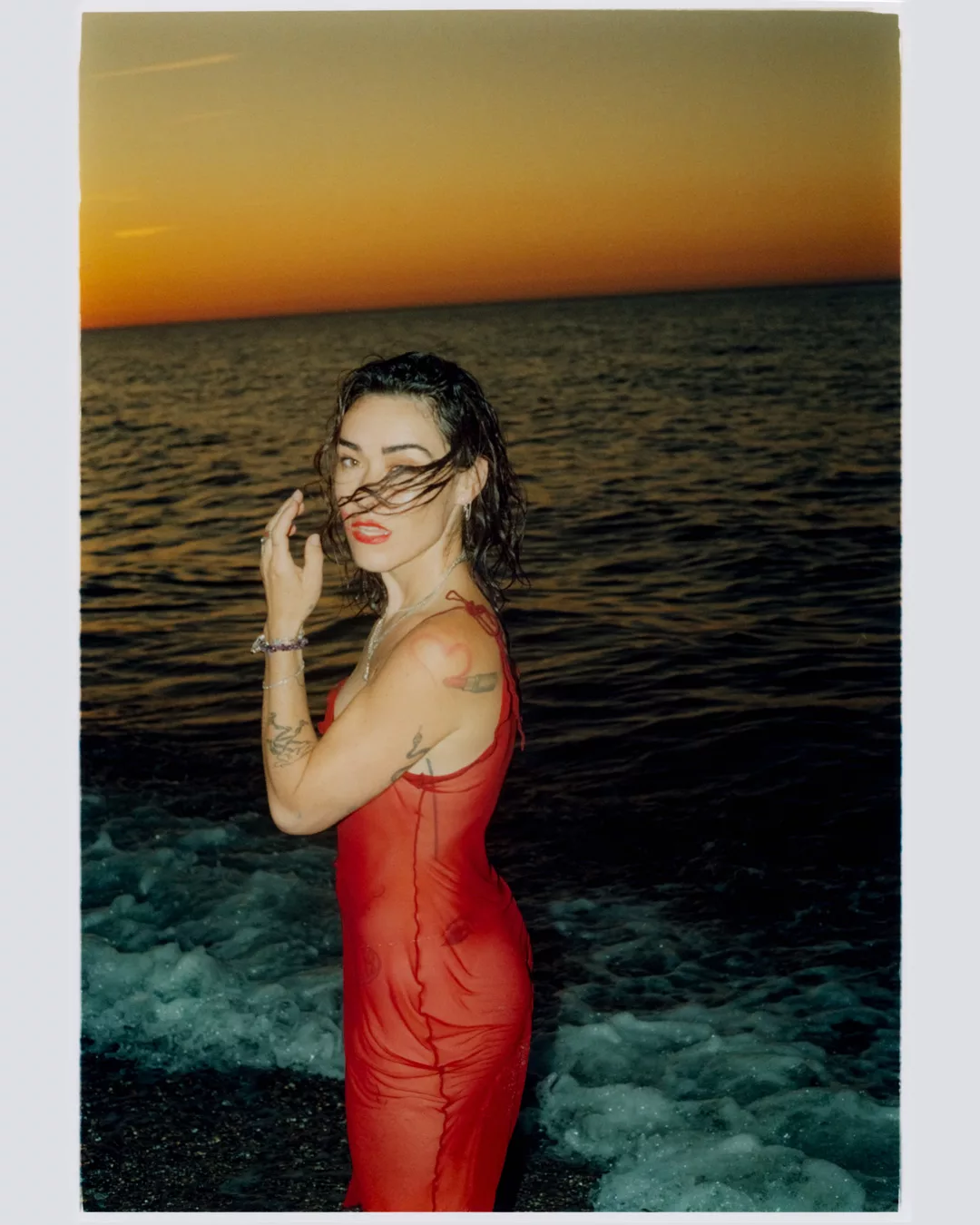
RF: When you’re creating these unique worlds, moods and environments, selecting locations and themes for your photo shoots, what are some of your sources of inspiration? I know that you reflect on your own personal experiences, but is there a response to the subject matter in these choices?
RI: We get so much inspiration on the road, while travelling. Even when we’re out walking our dog, we’re developing ideas based on what we’re seeing around us, but also bouncing off of each other.
FR: Coming from Mexico, a country that’s so beautiful but at the same time so chaotic—I’ve always wondered how it still exists without collapsing—there is definitely an inclination to surrealism. It’s needed to understand the situation there. But imagination and stories are also such a big part of Mexican culture; we have so many traditions, celebrations and even different languages and histories from all the cultures that constitute what you can call ‘Mexico’.
Coming from such different parts of the world, we have great conversations and discussions about our lived experiences and histories to really create a world of our own imagination. We also take inspiration from people around us, friends and family.
RI: It’s through these connections and networks, that we find a lot of our shooting locations. Friends will recommend places they know or which are owned by friends of friends.
RF: You’ve said that you play music on your shoots to create these conceptualised environments. I know you curate playlists, Fede, to put everyone in the right mood and create an atmosphere, and Rachel, you studied sound and light engineering and were part of a music collective. How does music influence the creative process and mood in your photography?
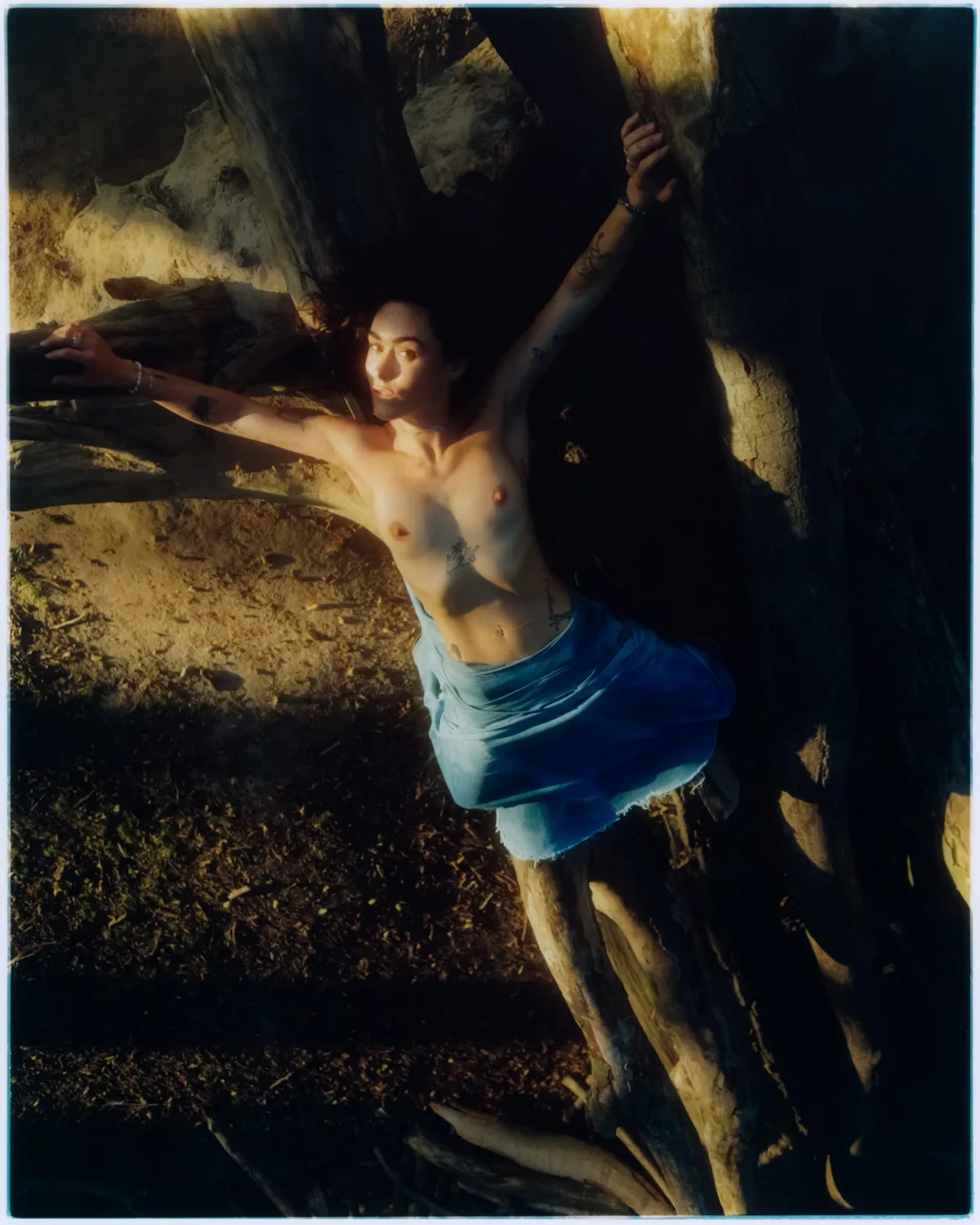
RI: Yes, I was in a music collective for seven years. Before I started photography, I was a light and sound engineer too, so I’m still inspired by creating light installations and parties. We were a big group of friends and we’d all travel a lot with our work, even touring China during the pandemic.
FR: We use music and playlists to break barriers with the models. I like to curate music in a way that helps create these fantasy worlds, but also to direct the subject. Sometimes we even want to create a slightly irritated vibe on the shoot, so I’ll maybe play some industrial music to influence the mood of the model. We can transform the shoot in this way.
RF: The concept of intimacy, between the subject and the lens, but also with each other in your professional and personal relationship, is really interwoven in your work. You’ve said before that you swap cameras while on shoot, to get a fresh perspective. How do you keep up that sense of synergy in your working relationship, and how does this manifest in your practice?
FR: Through constant communication and always trying to move forward and progress together. We talk a lot about deconstructing taboos and tackling issues surrounding gender and relationships. Through this we only grow closer. Even on the shoots, when we don’t agree on something, we can communicate in a way no one else notices.
RI: We also think it’s really important to have down time where we don’t talk about work.
FR: Yes, say it’s Sunday and we’re walking in the park, it’s easy to talk about a new exciting project we’re working on. But we have to stop ourselves. We often realise that we’ve been talking about photography for 48 hours straight, so we talk about anything else: travel, our friends, our dog. We try to focus on building our intimacy, switching off from work, going out to dinner or chilling.
RI: It can be challenging to live together and work together, even have a dog together, but we remind each other of our weaknesses and strengths and of how we balance each other in this way. We ground each other, both emotionally and also with our ideas—sometimes one of us has to say if an idea is kind of bad.
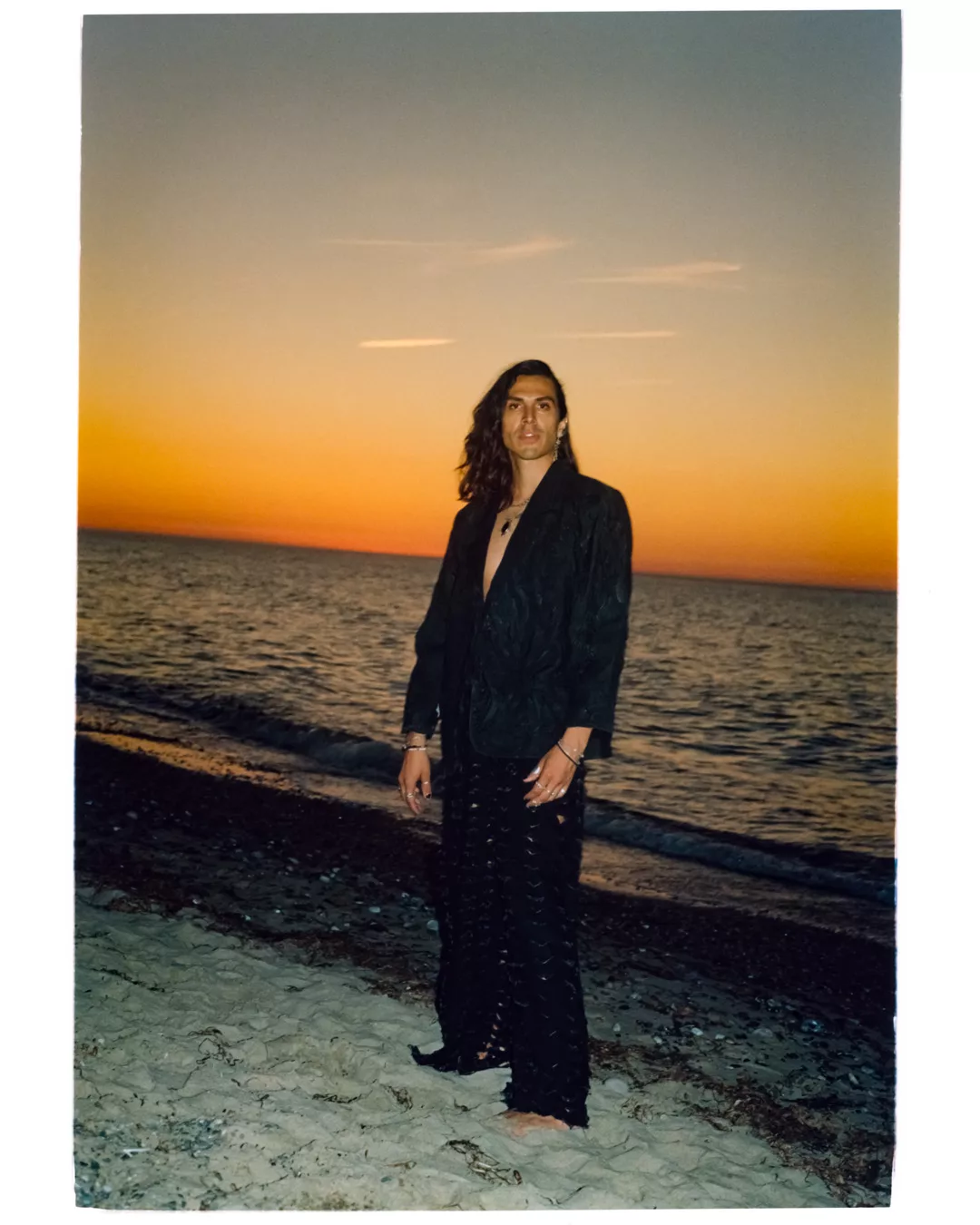
FR: Thankfully we’re really similar as people and in our tastes, but we still have to sometimes find compromises.
Another theme and reference in your works is narratives, characters and symbols of the occult and folklore. To what extent do these, as well as magic and the cosmic, have a role in shaping your creative vision?
FR: Entirely. I’ve always been drawn to shamanism. Being from Mexico, it’s part of everyday life; there are sites of Aztec temples and healers. We’re also interested in Tarot and Rachel is pretty witchy in her own way. We incorporate many of these magical symbols into our work. We even have a book of symbols that we refer to.
Feminism also plays a big part in our lives. We’ve both grown pretty tired of the current patriarchal paradigm. Growing up in Mexico, a still extremely macho culture, I had this incredible context to do my best to educate myself about intersectional feminism, how witchcraft, magic, spirituality and the taboo play into ideas of feminism, especially considering that the church decries these as forbidden, sinful and wrong.
RI: Yes, it’s the feminine person who’s being forbidden here, and whose power and empowerment is being suppressed by the patriarchy.
RF: You mentioned that the most beautiful shoots happen when you stage something like a ritual. How do you incorporate this ritualistic element into your photography and how does this formulate in your practice as a means of self-exploration?
RI: I’m a practical person, and sometimes I don’t mean to act in a ritualistic way, but it’s just how I work instinctively. I print by hand and love all the tactile stuff involved. But I’m always learning, especially on shoots: something works out, or doesn’t. It’s not like I write it down, I learn by doing.
FR: The beauty of rituals is that you can use them to create a virtual reality. I like to think of it as putting on a play, determining the actions in it. Creating these rituals can be a method of self-realisation, understanding yourself better through staging an interaction with a person, getting to know your fears and expectations.
RF: With such a busy routine and many projects on the horizon, you’ve mentioned the necessity of taking time off and doing something completely different to help maintain the work-life balance. What would you say are your own rituals?
FR: We’re actually really proud of our weekend routines. They’ve changed a lot over the past year or so. We used to go out clubbing a lot; it was a bit hardcore. Now we start the day early, with meditation, breakfast and a walk in the park with the dog. We often hang out with friends from the studio, like our friend Daisy Watson, a multidisciplinary artist and a pretty well known tattoo wizard. We also love cooking; we’re both really good at it. If we lost interest in photography, we’d open a café or restaurant.
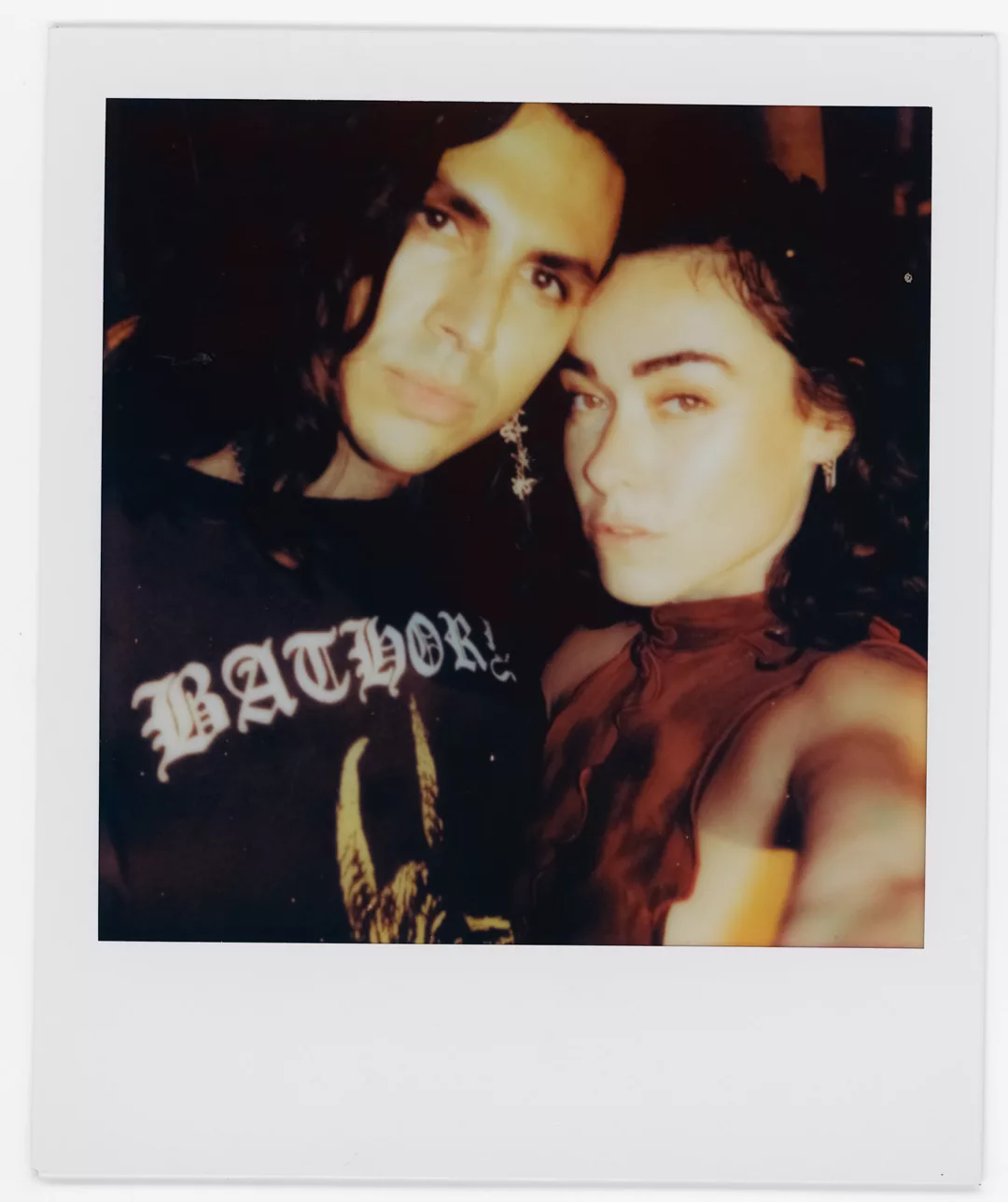
RI: We also like to head out of the city. It can be such a stressful place and Berlin is smaller than you’d think. We just like to have very calm weekends now, which we’ll often end by going to the cinema.
RF: We’ve talked about music being a big part of your rituals on set. In your own downtime, which track would you use to kick your weekend rites off?
RI: I really like ambient music. A good friend, Florence Scott-Anderton, has been hosting a show on NTS Radio, ‘Sounds on Screen’ so I tend to put that on. We both love movie soundtracks.
FR: Yes, I’m also really into meditation, so I start my day with Tibetan singing bowls. But as for a specific track, to set the tone for a good Sunday, we both love the song Chung Kuo by Vangelis, who made the soundtrack for the first Blade Runner—a movie we’re both completely obsessed with.
Words by Rosie Fitter
